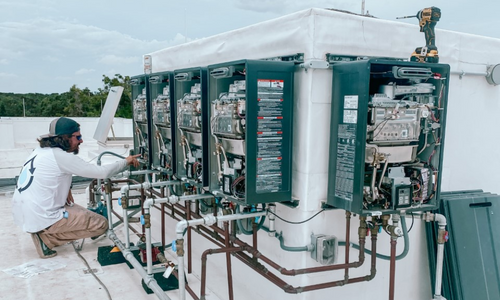Sump Pump Installation- Protecting Your Home from Water Damage
If you live in an area prone to heavy rainfall or flooding, you know how important it is to protect your home from water damage. One of the most effective ways to do this is by installing a sump pump. A sump pump is a device that helps prevent basement flooding by collecting water that accumulates in a sump pit and pumping it out of the house. Here's what you need to know about sump pump installation.

- Choose the Right Location
The first step in sump pump installation is choosing the right location for the sump pit. The sump pit should be placed in the lowest part of your basement or crawlspace, where water tends to accumulate. The sump pump should be installed in the sump pit, and the discharge pipe should be directed away from the house.
- Determine the Type of Sump Pump
There are two main types of sump pumps: pedestal and submersible. Pedestal sump pumps have a motor that is mounted on a pedestal above the sump pit, while submersible sump pumps have a motor that is mounted inside the sump pit. Submersible sump pumps are more expensive than pedestal sump pumps, but they are more efficient and quieter.
- Install the Sump Pump
Once you have determined the location and type of sump pump, it's time to install the sump pump. The sump pump should be installed according to the manufacturer's instructions. This typically involves cutting a hole in the basement floor, digging a sump pit, and installing the sump pump in the pit. The discharge pipe should be directed away from the house and should be long enough to reach a suitable drainage area.
- Test the Sump Pump
After the sump pump is installed, it's important to test it to ensure that it is working properly. To test the sump pump, pour water into the sump pit until the float switch activates the pump. The pump should turn on and pump the water out of the house. If the pump does not turn on or does not pump the water out of the house, there may be a problem with the installation or the pump itself.
- Maintenance
To ensure that your sump pump continues to function properly, it's important to perform regular maintenance. This includes:
- Testing the sump pump regularly
- Cleaning the sump pit
- Checking the discharge pipe for blockages
- Replacing the battery backup (if applicable)
In Conclusion
Sump pump installation is an important step in protecting your home from water damage. It's important to choose the right location, type of sump pump, and to install the sump pump properly. Regular testing and maintenance can help ensure that your sump pump continues to function properly and protect your home from flooding. If you're not comfortable installing a sump pump yourself, it's best to hire a professional plumber to do the job.
For More Info:- 24 hour emergency plumber near me